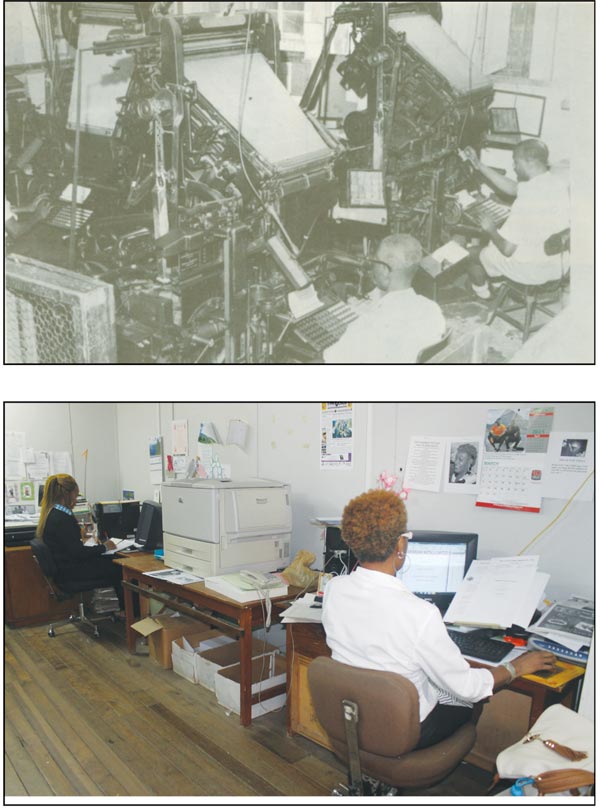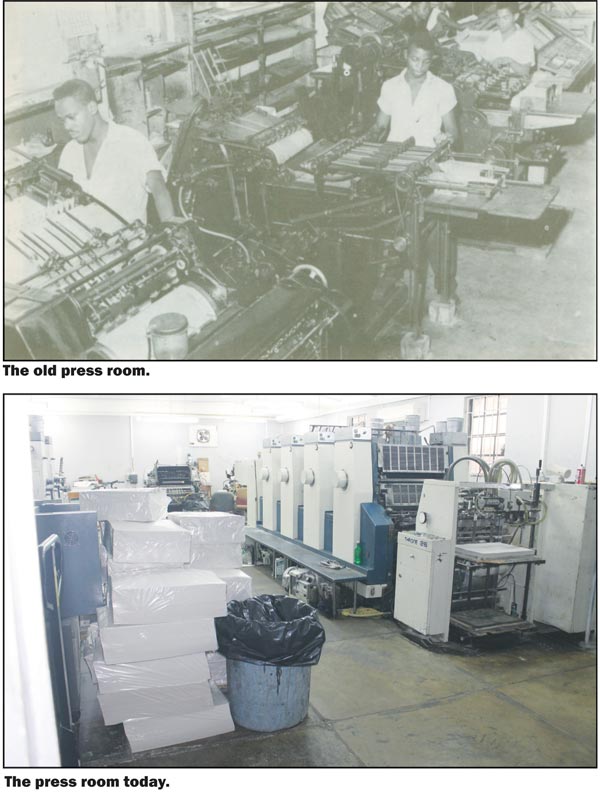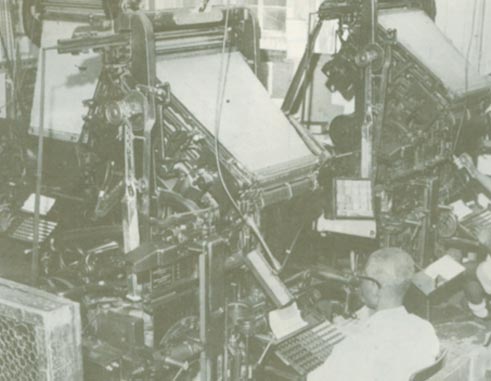
ONE of crucial elements in the success of any business, especially one that has been around for quite some time is “change”. A business which remains stuck in its ways will get nowhere, but will stagnate, decline and subsequently wither away.
We at THE VOICE will like to believe that our penchant for change is one of the factors responsible for our longevity. In fact, the policy of change and moving with the times was evident from the very beginning when the pioneer editor Robert George Mc.Hugh was succeeded by his daughter, at his death.
New Editor Marie Mc.Hugh took over and promptly changed the paper’s content with a new emphasis on news rather than the opinions which had dominated its columns under her father.
More changes came when the paper passed into local hands in 1920. For starters, THE VOICE moved from being a weekly to a bi-weekly newspaper published on Wednesdays and Saturdays. A 50 percent cut in the cover charge had the twin effect of boosting circulation and enabling the ordinary man to purchase copies.
New editor/proprietor George Gordon was an innovator and in order to publish news from the other islands, he started an exchange system with other papers in the region, THE WEST INDIAN in Grenada, The Port of Spain GAZETTE in Trinidad, the DAILY CHRONICLE in Guyana, the ADVOCATE in Barbados, THE VINCENTIAN in St Vincent and the CHRONICLE in Dominica.
Of course, there were no computers with email in those days to transfer information, not even travel by air. The overseas newspapers got here by steamship, and that arrived every two weeks. Still, the VOICE OF ST. LUCIA was able to publish news from the region, giving its readers a peep into what was taking place in the neighbouring islands.
On the night of May 14, 1927, THE VOICE OF ST. LUCIA premises at the corner of Bridge and Victoria Streets went up in flames in the great fire of that year. But it returned to business on the same spot some time later in a newly built three storey building. In fact, the fire did not hinder publication of the paper too long as within three days of the disaster, it was back in circulation in foolscap size format, printed on a manual press retrieved from the fire, a feat which prompted words of encouragement to the editor from the island’s British Governor. By December the same year the paper was fully back and in the following month a new printing press was installed.
However, one notable casualty of the fire was some 43 years of bound copies of the paper which were reduced to ashes.
By the time George Gordon died in February 1940 he had taken the paper’s publication days from two to five a week. His son, Garnet, who then took over, instituted several changes of his own all the time enhancing the standard of printing which, however, remained primitive and time-consuming.

On the night of June 19, 1948, THE VOICE OF ST. LUCIA’s premises was again burnt to the ground in another holocaust. New materials and equipment that would have enhanced the paper’s printing process, including a type-setting machine, were all destroyed in the fire. The paper was again forced to re-size but all concerned continued to show grit and determination and the company continued to survive.. In fact, in addition to the newspaper the Voice plant was also able to assist the government with its printing work since its own printery was also destroyed in the fire.
Meanwhile, the company’s premises was again rebuilt, this time a modern building in Castries as were many of the structures that were rebuilt as a result of the fire. New plant and material were acquired and such was the progress then that the printery won itself a contract to print and bind volumes of the revised laws of St Lucia and Grenada, which had previously been undertaken in the United Kingdom.
In 1953, a new company, The Voice Publishing Company Limited was created and a bold new programme aimed at improving the newspaper was launched. The number of columns was increased and several new features were added at no extra cost to readers. Colour came to the paper in a small way with the masthead printed in blue, another cost absorbed by the company which had by 1955 began to lobby for commercial printing work in the Windward and Leeward Islands and Barbados, with some success. The paper meanwhile, reverted to being bi-weekly.
In 1957, the company was taken over by Overseas Newspapers (Agencies) Limited, a British group that operated the Daily Mirror and several other regional newspapers. That arrangement continued until 1966 when another British outfit, the Thomson group acquired the company. Ten years later, the VOICE OF ST. LUCIA was back in local ownership and was affiliated for a while with the Trinidad Express newspaper company.
The decade of the 1970s, and the leadership of then “Sir” Garnet Gordon was an era of rapid expansion and modernization for the company. This started with the shifting of operations from the heart of the city of Castries to the present location at Odessa Building, on Darling Road. The changes came thick and fast. Years of letterpress printing—a process that involved giant linotype type-setting machines that used hot metal (lead) and boxes of “type” from which letters formed words, then sentences, to put copy together, gave way to the electronic age and offset printing. There were clear advantages using this new process, including cleaner work and much faster and efficient production.
Sadly, Sir Garnet passed away in August 1975, but his two sons, civil engineer Lyndell and attorney Michael, later an Eastern Caribbean Supreme Court judge ,continued the relay. They were joined on the directorate of the Voice Publishing Company later by a fourth generation Gordon, Michael’s son Tomas, who is also working with the company as Commercial Print Manager.
In 1975 THE VOICE OF ST. LUCIA experimented with the launch of a new venture, an entertainment newspaper CANELLES, to cater to younger readers. Intended as a monthly, it recorded only one issue and was discontinued because the market could not provide the required level of advertising to make the project profitable. Two years later, the newspaper reverted to three issues a week and introduced full colour in its pages, a direct result of the move to offset printing. In the 1980s, it saw the need to encourage reading among students and introduced THE JUNIOR VOICE which lasted survived several months until folding, again for lack of advertising support. In ………. the continuing thrust to attract younger readers resulted in the launching of YO, a miniature magazine as a supplement to THE VOICE. This publication has survived to this day.
In……….. the newspaper began to be published electronically at its new website thevoiceslu.com, joining the procession of newspapers throughout the region and indeed the world, which have embraced this innovation.
With these and other changes, THE VOICE continues to plan ahead to build on its legacy in the overall history of St Lucia.














